Storm Eunice by Christopher Ison (UK).
Held in association with AccuWeather, the photo contest is a celebration of weather in all forms.
And so, fittingly, the winning photos take us on a journey through icy storms and stunning rainbows.
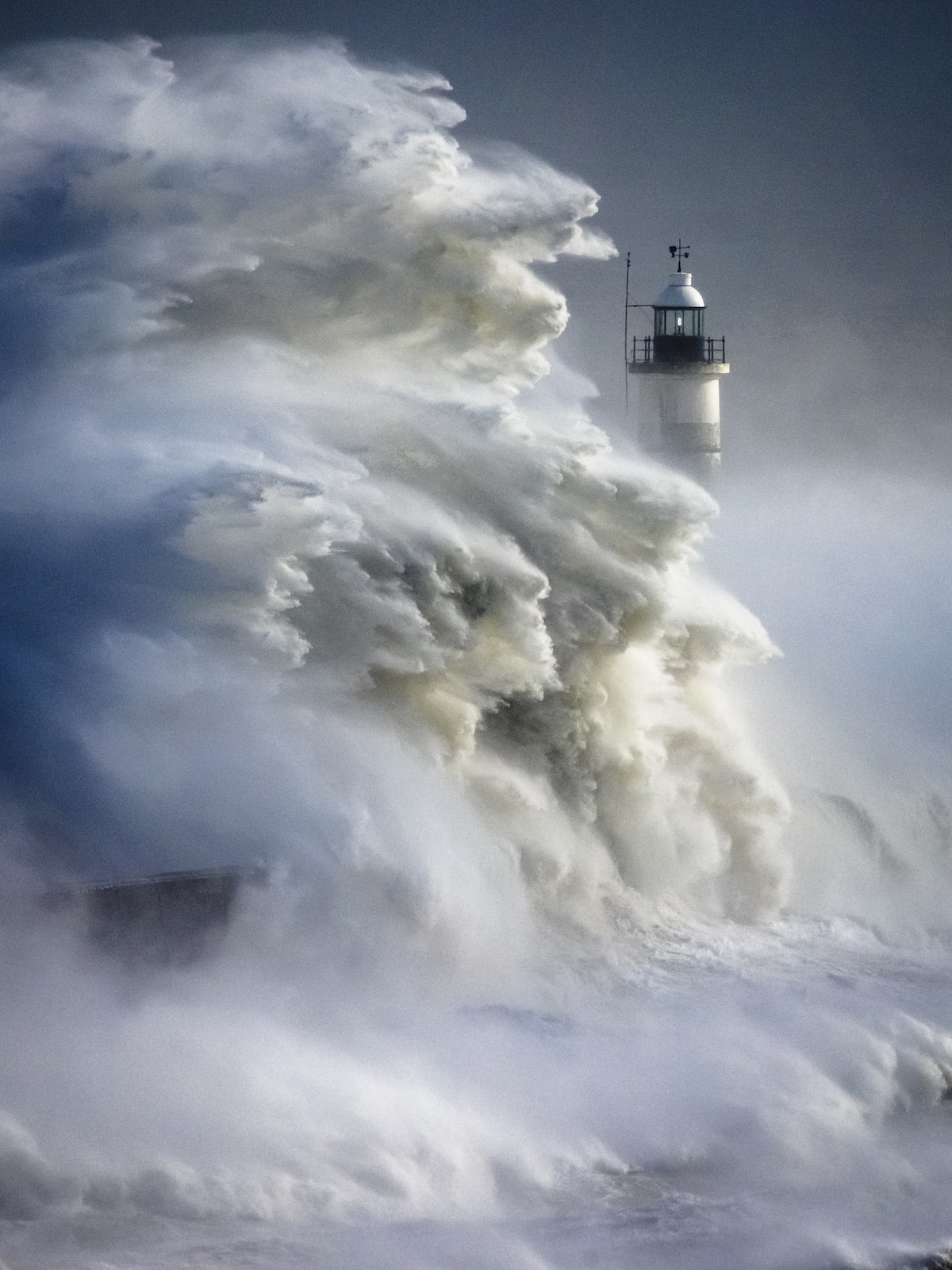
“Storm Eunice” by Christopher Ison (UK). Weather Photographer of the Year Winner.“After checking the time Storm Eunice would hit as well as the high tides times, Christopher discovered that the storm would hit Newhaven, East Sussex, at almost exactly high tide. When taking his photo, Christopher decided to head to high ground and stand slightly further away from the harbor wall with his back to the weather and was rewarded with a fantastic set of images.”
I decided to head to high ground and slightly further away with my back to the weather.
I was rewarded with a set of images Im very proud of.
On the opposite end of the spectrum,Jamie Russellwas rewarded for capturing a relatively calm moment in nature.
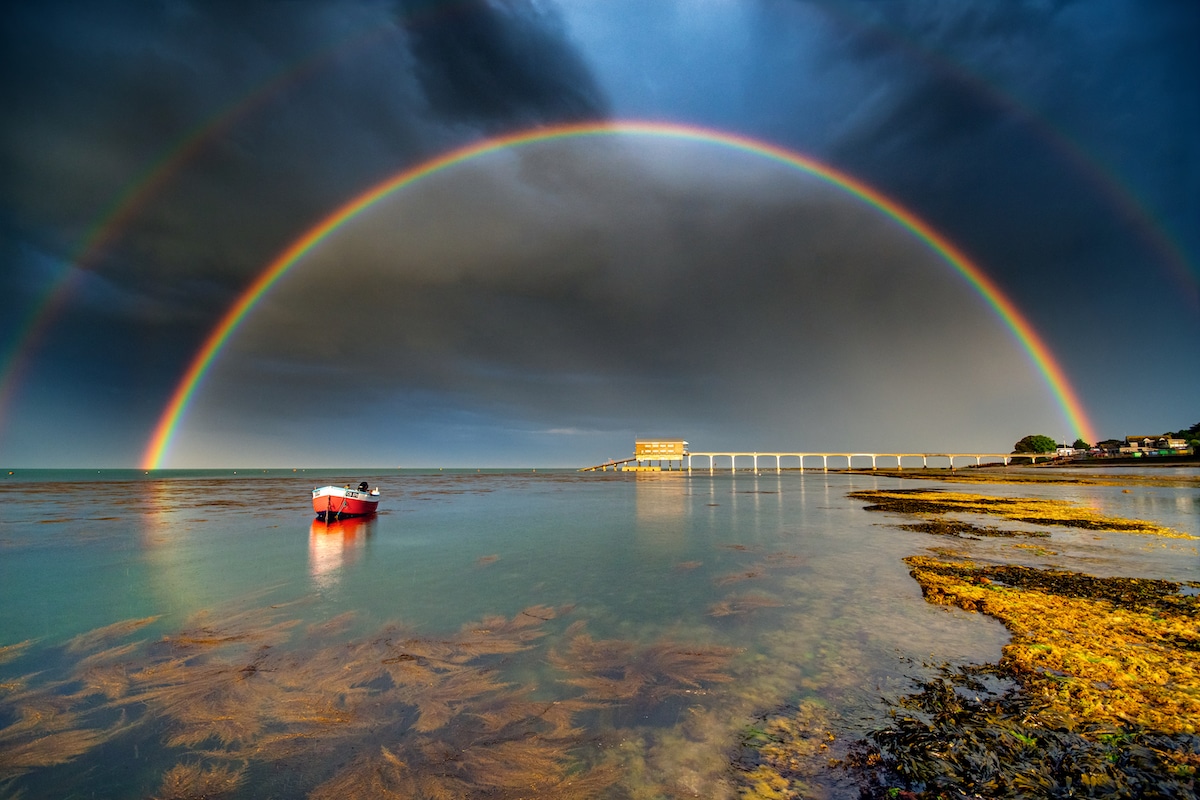
“Departing Storm Over Bembridge Lifeboat Station” by Jamie Russell (UK). Public Favorite.“After chasing storms and showers west to east across the Isle of Wight to capture some incredible rainbows, Jamie reached Bembridge as the final shower left. “In a panic (he) waded into the waist-deep water, fully dressed, just to compose this scene”.Rainbows are optical phenomena that occur when sunlight shines through raindrops. The light is refracted as it enters the raindrop, then reflected off the back of the droplet and then refracted again as it exits and travels toward our eyes. This causes the sunlight to split into different colors. The sun needs to be behind the viewer and needs to be low in the sky. The lower the sun in the sky, the more of an arc of a rainbow the viewer will see. Also, the rain, fog, or other source of water droplets, must be in front of the viewer. The angle at which the light is scattered is different for everyone, which means that every rainbow is unique to the observer.Double rainbows form when sunlight is reflected twice within a raindrop. They are relatively common, especially when the sun is low in the sky, such as in the early morning and late afternoon. The second rainbow is fainter, and more ‘pastel' in tone and a key feature of a double rainbow is that the color sequence in the second rainbow is reversed.”
His beautiful photo of a double rainbow on the Isle of Wight won the Public Favorite award.
He beat out the other 22 shortlisted images after nearly 5,500 votes were cast by the public.
To take the photo, Russell really showed his commitment to his craft.
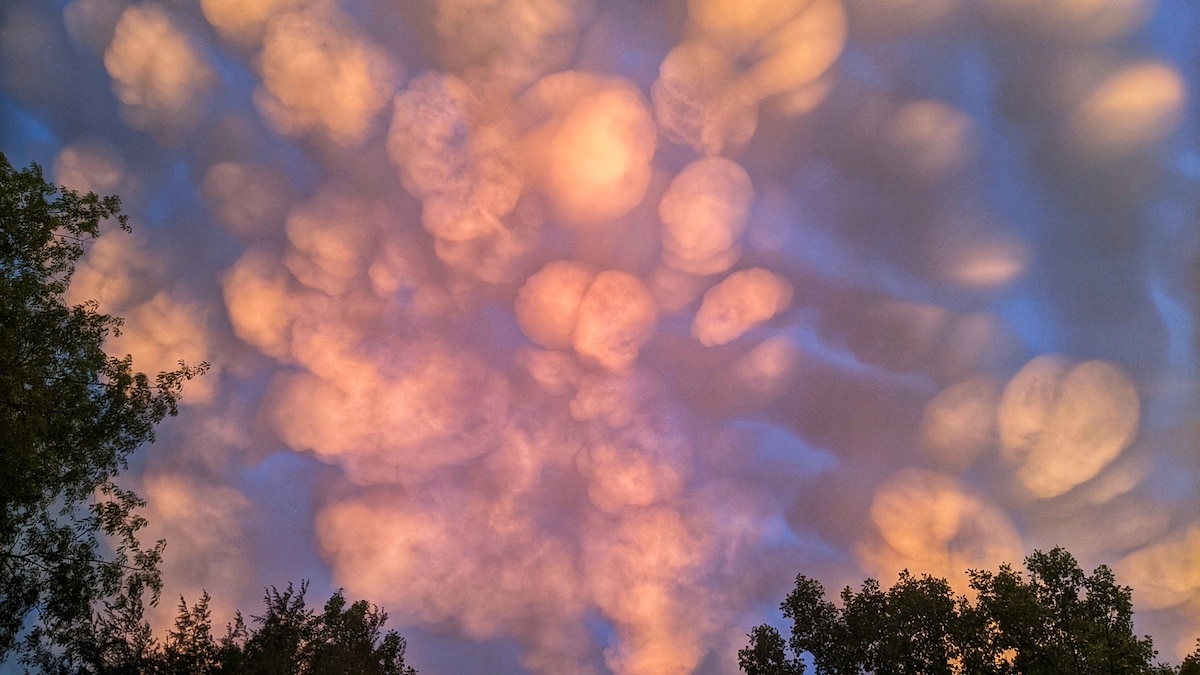
“Mammatus Sunset” by Eris Pil (USA). Young Weather Photographer of the Year Winner.“Eris said, “the sky was completely lit up in a way I had never seen before, like these beautiful backlit watercolor clouds”, displaying these spectacular mammatus clouds overhead.Mammatus clouds are some of the most unusual and distinctive and are usually associated with large cumulonimbus clouds. They appear as a series of bulges or pouches emerging from the base of the cloud and form in the most unstable cumulonimbus clouds due to turbulence within the cloud.Mammatus comes from the Latin mamma, which translates to ‘udder' or ‘breast', and they are more visible when the sun is low in the sky, and the sunlight frames their pouches.“”I love mammatus clouds; this was my first time ever witnessing them. I hope I have the opportunity to see them again, and I’m excited to share what they look like with others”.”
So, he ended up wading into waist-deep water to take the perfectly composed photo.
Here are more winners of the 2022 Weather Photographer of the Year contest.
Departing Storm Over Bembridge Lifeboat Station by Jamie Russell (UK).
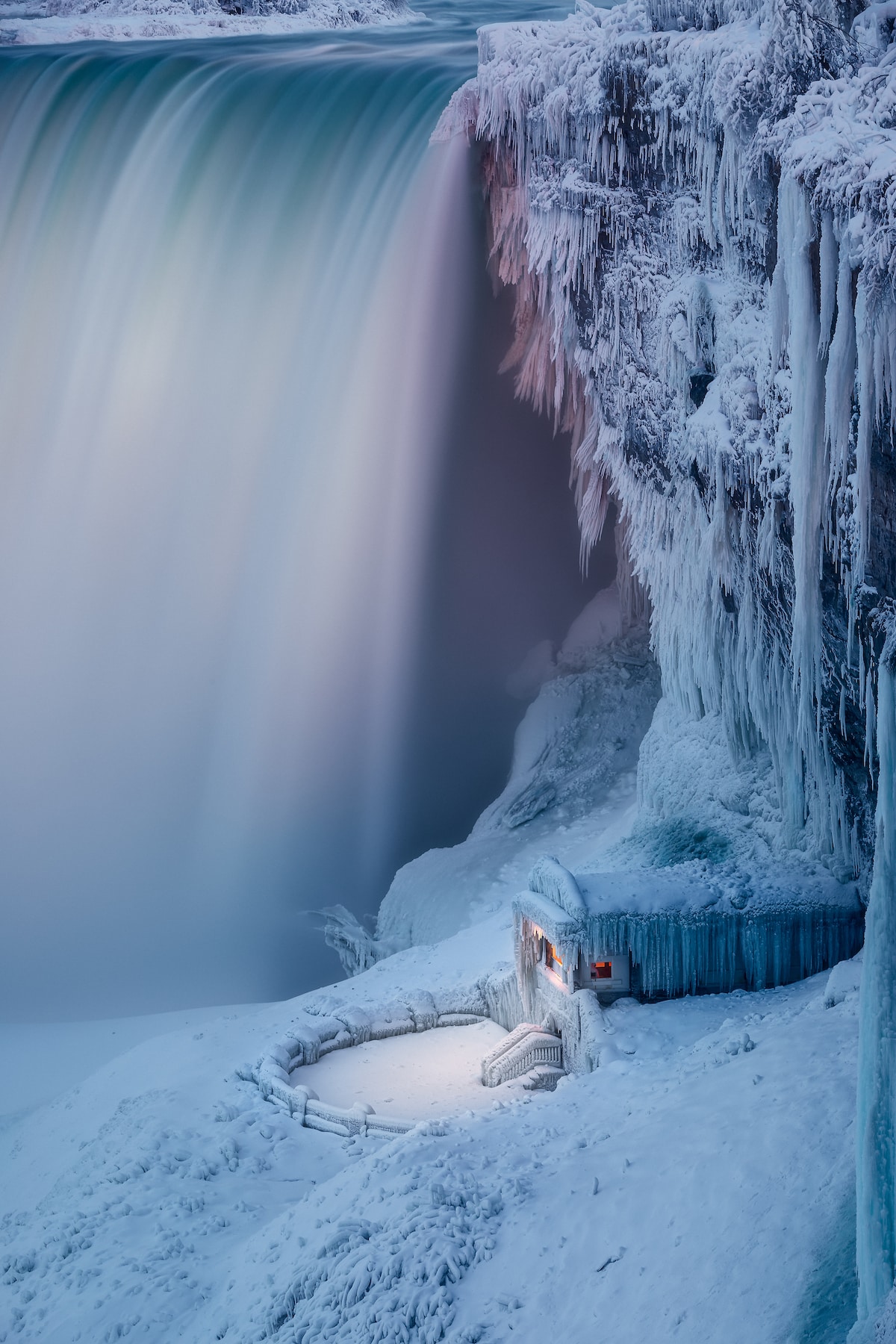
“Frozen” by Zhenhuan Zhou (Canada). Weather Photographer of the Year Runner Up.“Zhenhuan captured this photo showing parts of Niagara Falls covered in ice.During spells of cold weather, the mist and spray from Niagara Falls can freeze into ice over the top of the rushing water of the waterfall, giving the appearance that the Falls have frozen whilst the water continues to flow underneath the sheets of ice.However, there are records that the Falls' waters did stop once in March 1848. Strong winds pushed ice from Lake Erie into the mouth of the Niagara River, blocking the channel completely and stopping the water for about 30 hours. The wind then shifted, and the built-up weight of the water broke through the ice, forcing the Niagara River to flow again.The photograph offers intricate detail of the icicles that have formed around the building and on the rock face. Icicles are hanging tapering pieces of ice that form when the temperature is below freezing. As water drips off the roof or rock, it freezes and becomes suspended in the shape of a droplet. As more water droplets flow over the surface, they freeze on the way down, and so the process continues until an icicle is formed.”
This causes the sunlight to split into different colors.
The sun needs to be behind the viewer and needs to be low in the sky.
Mammatus Sunset by Eris Pil (USA).
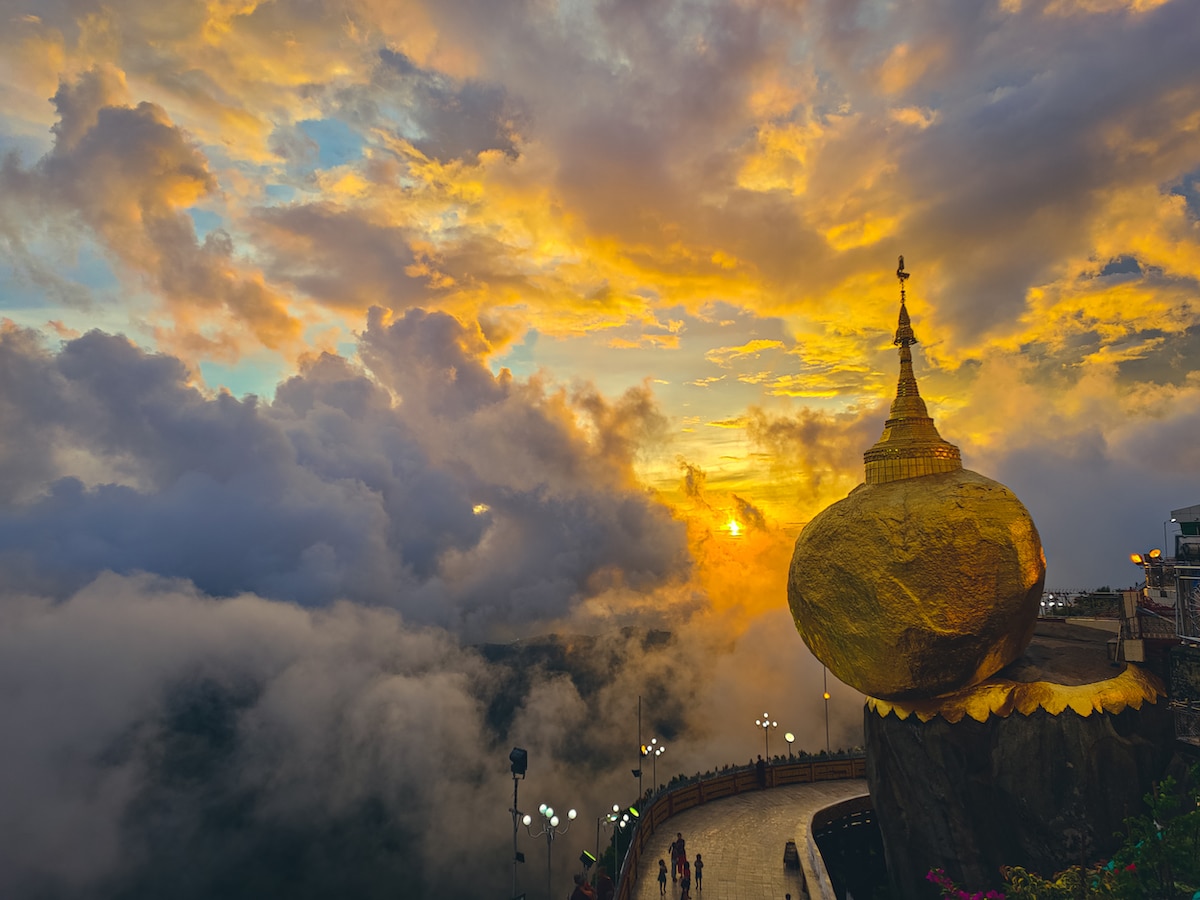
“Sunset” by Aung Chan Thar (Myanmar). Mobile Phone Winner.“Following an overcast and rainy evening, the sun appeared through the clouds and mist just in time for Aung to capture this beautiful sunset photo. “Due to the sun, the pagoda became brighter”.The sky appears red or orange at sunset or sunrise because of Rayleigh scattering. The sun is very low in the sky at sunset or sunrise, so the sunlight has to travel further through the atmosphere. As a result, the blue light, which has a shorter wavelength than red light, is scattered more strongly by the atmosphere and is deflected away before we see it. Therefore, the orange and red light, which is scattered less, is left for us to see during sunrise and sunset.”
Frozen by Zhenhuan Zhou (Canada).
Icicles are hanging tapering pieces of ice that form when the temperature is below freezing.
Scotch Mist by Vince Campbell (UK).
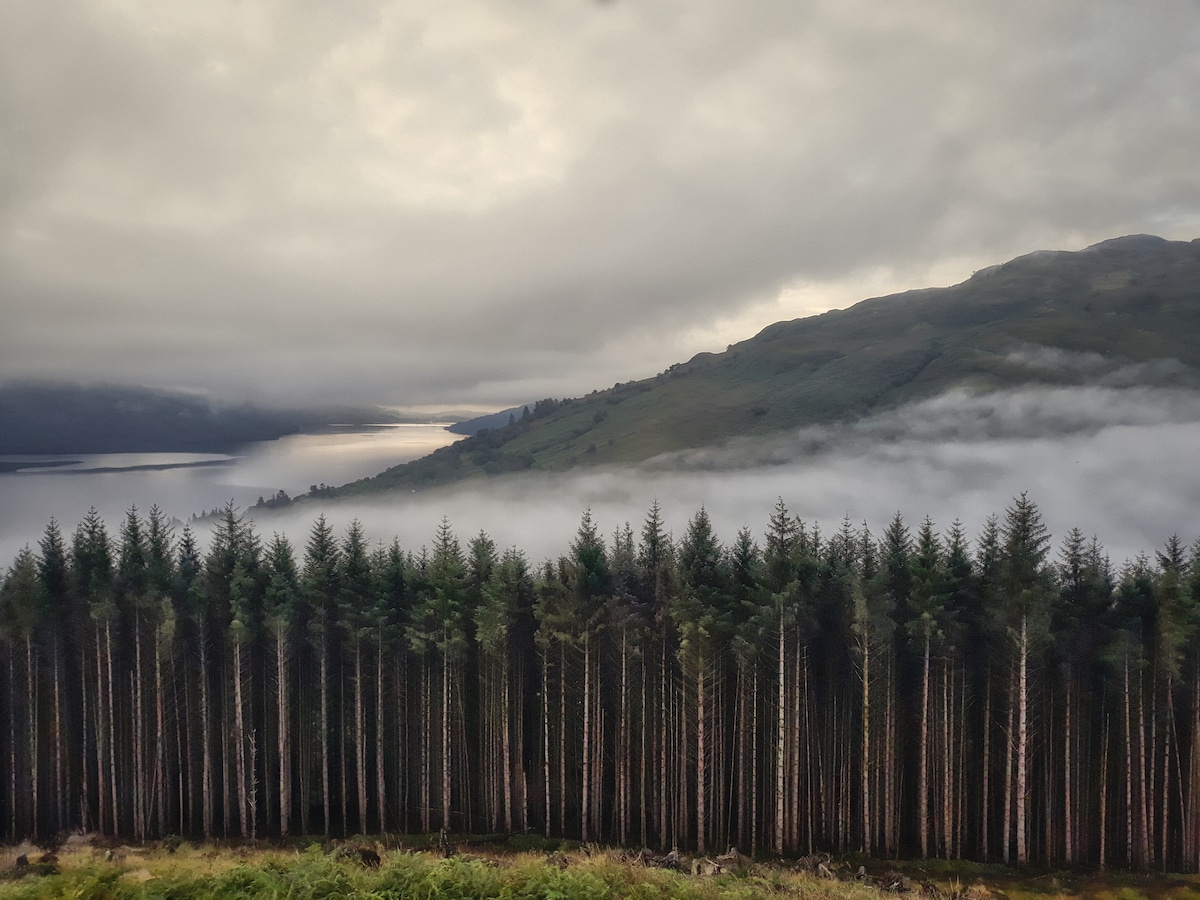
“Scotch Mist” by Vince Campbell (UK). Mobile Phone Runner Up.“An overnight stop in Tarbet, Loch Lomond in Scotland, and an early morning trek with dogs Oscar and Ollie up Cruach Tairbeirt revealed this beautiful misty scene to Vince. “The woods, the alps, the loch and Ben Lomond were bathed in ‘Scotch mist'. This shot was taken just before the sun put in an appearance”.Mist, like fog, is a low cloud or small water droplets suspended in the air, close to the ground. The relative humidity in mist and fog is more than 95%, but the difference between the two phenomena is all down to visibility. If you can see more than 1,000 meters, it is called mist, but if it is thicker and the visibility drops below 1,000 meters, it is called fog.Mist is typically dissipated quicker than fog and can rapidly disappear with even a light wind.”
The woods, the alps, the loch and Ben Lomond were bathed in Scotch mist'.
Ghost Under the Cliff by Emili Vilamala Benito (Spain).
An optical illusion then makes the shadow appear gigantic and at a considerable distance away from them.
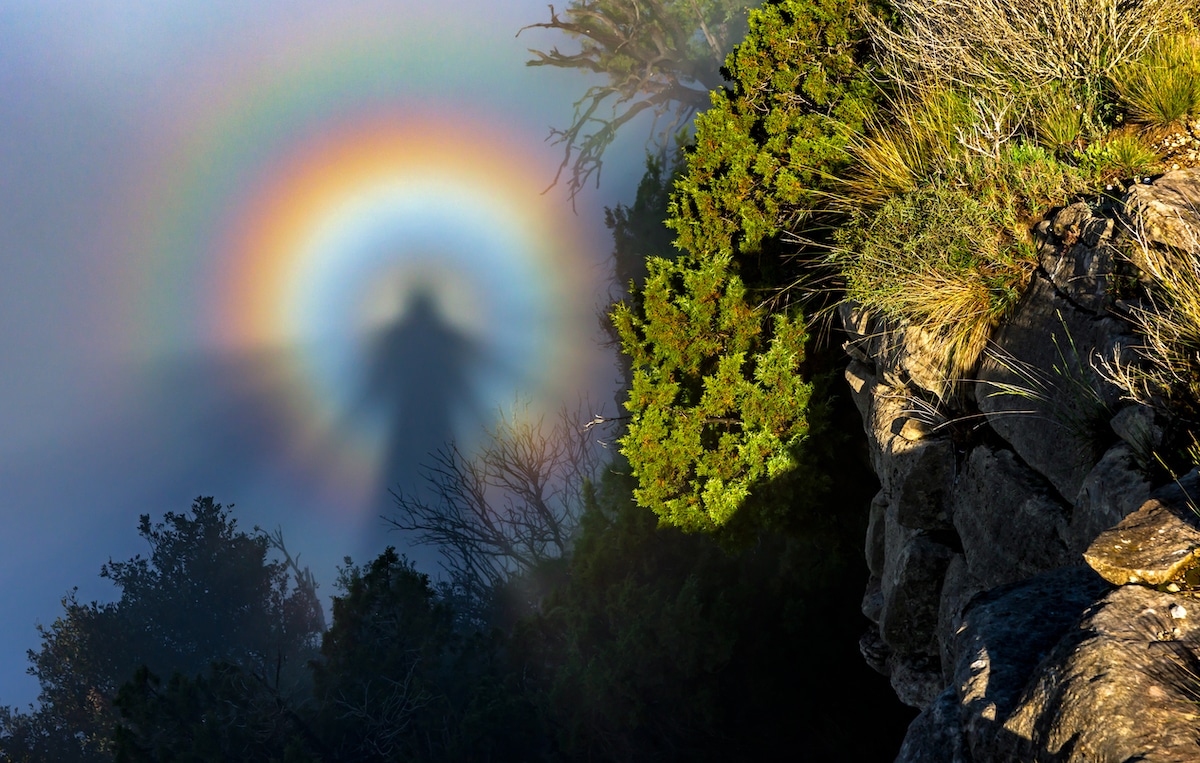
“Ghost Under the Cliff” by Emili Vilamala Benito (Spain). Weather Photographer of the Year, 3rd Place.“On the cliff of Tavertet in Barcelona, Spain, with the sun low behind and the valley of Sau covered with fog, Emili waited until a Brocken Specter appeared. “In this geographical area, you can see these phenomena due to morning fog, and when it fades, it is possible to see this spectacular optical phenomenon”.A Brocken Specter is a large shadow of an observer cast onto a cloud or mist. So, when a person stands on a hill partially covered in mist or cloud, their shadow can be projected down onto the mist or cloud if the sun is behind them. An optical illusion then makes the shadow appear gigantic and at a considerable distance away from them. The shadow can also fall onto water droplets of varying distances, which distorts the perception and can make the shadow appear to move as the clouds alter and shift. This combines to make the disorienting effect of a giant shadow moving in the distance.”
This combines to make the disorienting effect of a giant shadow moving in the distance.
Tyndall Effect by Sherya Nair (India).
Related Articles:
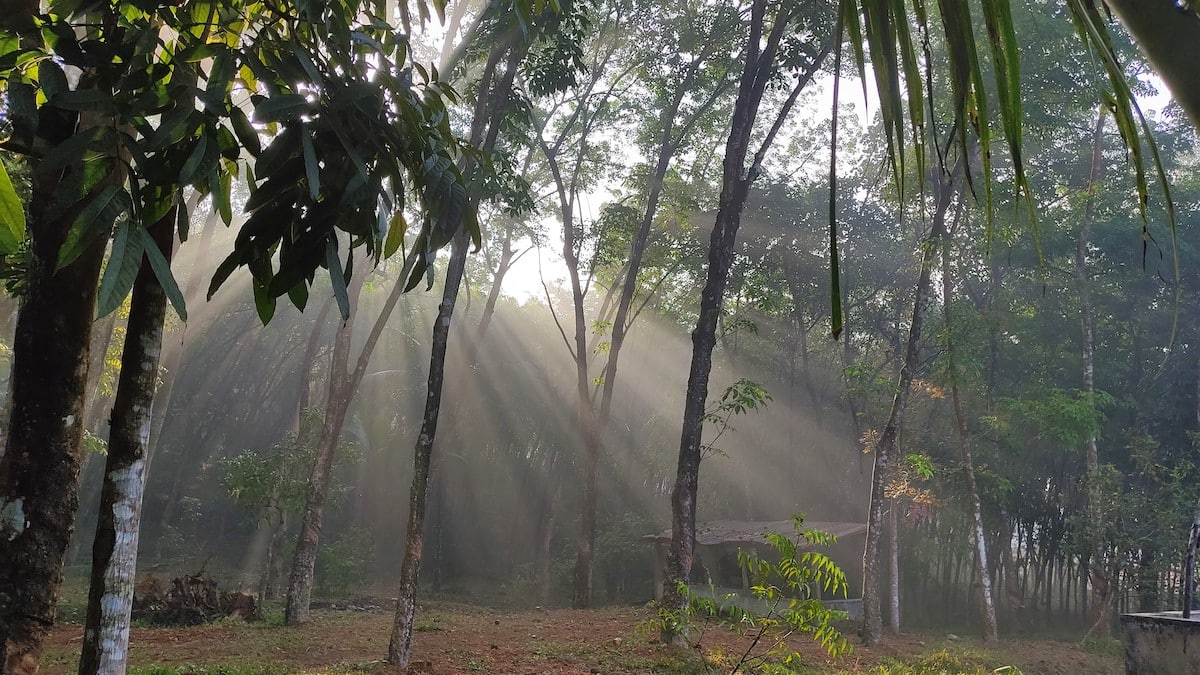
“Tyndall Effect” by Sherya Nair (India). Young Weather Photographer of the Year Runner Up.“While taking a walk through their backyard in India, Shreya spotted the light passing through the tree canopy.The Tyndall effect is when sunlight is scattered by small particles in the air, such as dust or smoke particles. Similar to Rayleigh scattering, it is the process that causes the sky to appear blue and the sky at sunset and sunrise to appear orange or red. Under the Tyndall effect (and Rayleigh scattering), the shorter wavelength blue light is scattered more than the longer wavelength red light, and as our eyes are more sensitive to blue light, we see the sky as blue.”